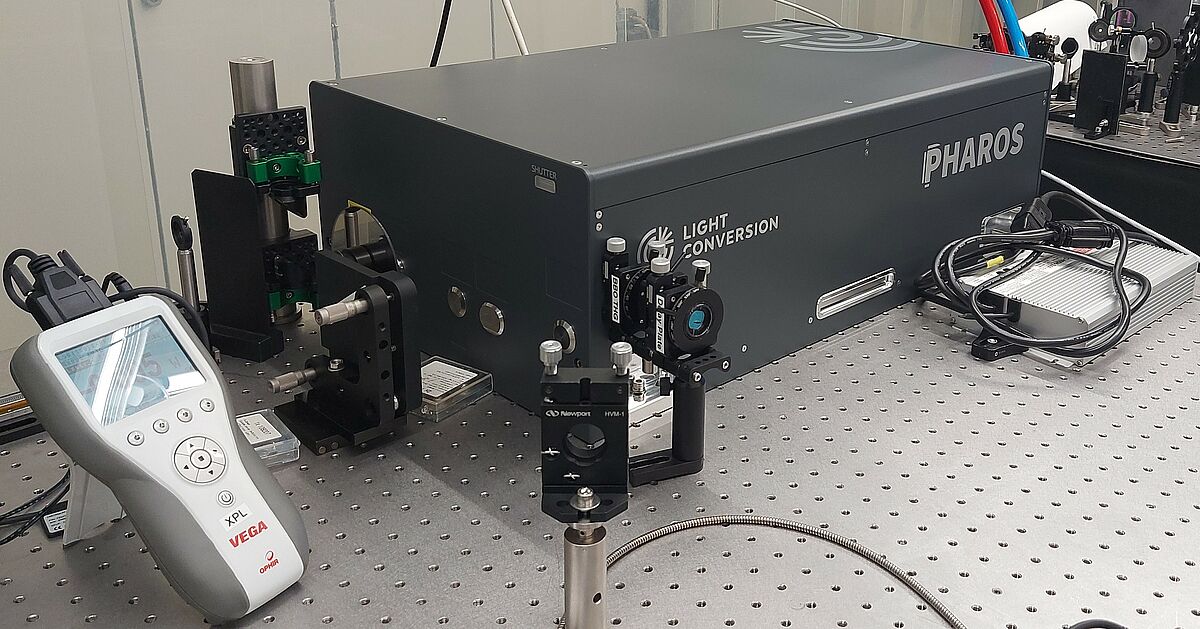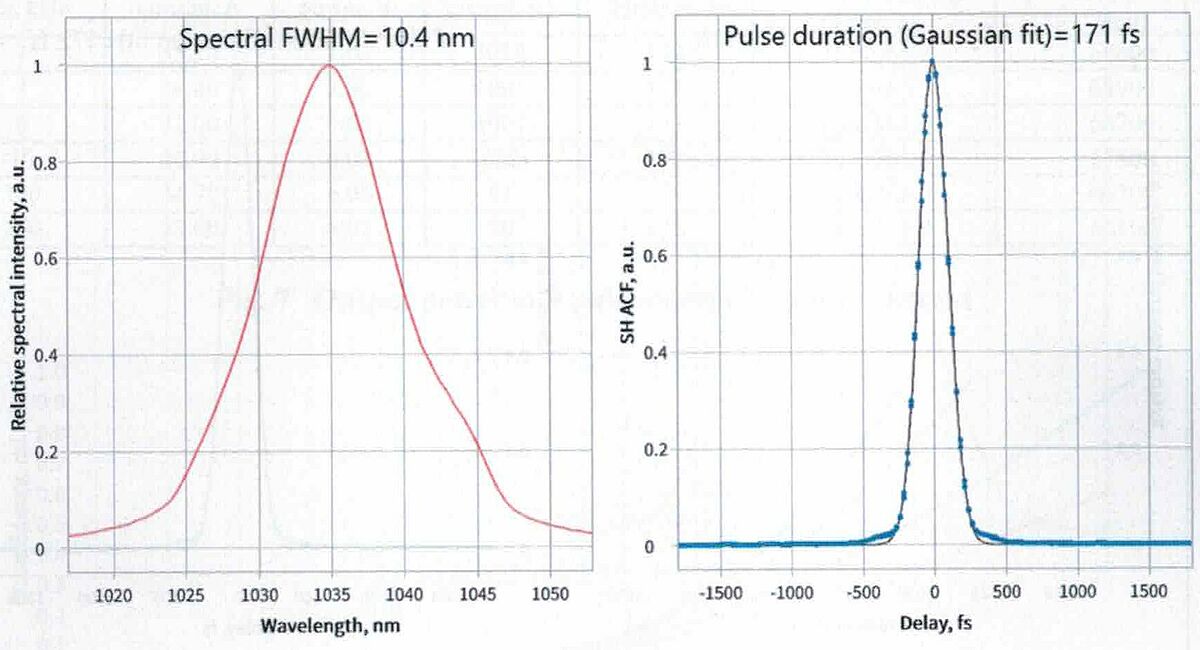PHAROS femtosecond laser
With the new laser, which was purchased with EFRE funding, we are currently performing ultrafast ablation studies on transparent materials such as silicon dioxide and sapphire. Our central goal is to find ideal conditions under which ablation can be performed with minimal damage. In other words, we are interested in efficient material ablation without damaging the underlying crystalline structure of the thin films. Our goal is to use the acquired laser to create crystalline films down to a thickness of a few microns. This capability will open up market opportunities, as these important materials are not yet commercially available. In a next phase, we plan to work with our project partner to use CO2 lasers to fine polish the surface of the fabricated samples. Next, the same laser will be used for the generation of harmonics on the thin films produced. Since this process is very sensitive to the quality of the films (crystallinity), the laser will play an essential role in evaluating our progress. In a future step, we plan to compress the pulses of the acquired laser to 30 fs by using nonlinear techniques in which our group has great experience. This will allow us to shape the material even more efficiently and produce ultrathin crystalline films. The films produced will be important not only for our research program, but also for a broader community that studies solid-state phenomena under strong laser fields.
The PHAROS PH2 is a compact femtosecond lasers system with millijoule pulse energy, high average power and thermal stabilisation. The tunability of the PHAROS allows for convenient switching of the repetition rate (single-shot – 1 MHz), pulse energy (up to 2 mJ), and average power (up to 20 W). The laser system is also optical-design optimized for scientific use.
Specifications of the PHAROS femtosecond laser:
- Power = 6 W
- Repition rate = 6 kHz
- Pulse energy = 1 mJ
- Pulse duration = 170 fs
- Central wavelength = 1035 nm
- Spectral width = 10.5 nm (Full-Width at Half-Maximum)
Currently in the XTreme Photonic Lab, the PHAROS serves as a source for the generation of a supercontinuum spectra.
Grant amount = €113,258.25
Fördernummer: GHS-20-0051
You can find more information on funding from the European Regional Development Fund (ERDF) here .
Dieses Projekt wird/wurde kofinanziert von der Europäischen Union aus dem Europäischen Fonds für regionale Entwicklung. Operationelles Programm Mecklenburg-Vorpommern 2014-2020 - Investitionen in Wachstum und Beschäftigung


